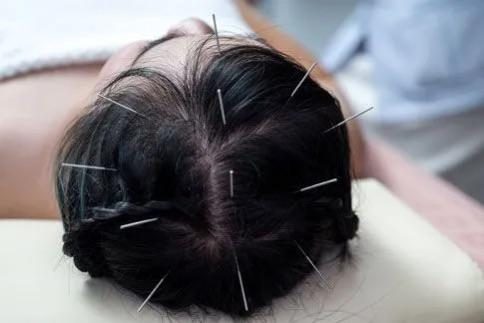Link: https://pubmed.ncbi.nlm.nih.gov/41135694/
Introduction
Muscle spasticity after stroke remains one of the most challenging hurdles for rehabilitation. While modern therapy and neurology have advanced, many stroke survivors continue to struggle with tight, uncontrolled muscles that interfere with walking, balance, daily tasks and quality of life. A new systematic review and meta-analysis offers encouraging evidence that a combined approach — known as motion-style scalp acupuncture (MSSA) — may help address this problem.
Scalp acupuncture is a technique rooted in traditional Chinese medicine (TCM) in which fine needles are inserted into specific areas of the scalp that correspond to functional zones of the brain. Traditionally it has been used in neurological and rehabilitative contexts. The “motion-style” variant adds a key component: during the acupuncture session the patient actively moves the affected limbs while the needles are in place. This means the brain and nervous system are receiving the acupuncture stimulus and simultaneously being engaged in motion—integrating TCM theory with rehabilitation-style movement training.
The Study
In a paper titled, “Novel efficacy evidence and mechanistic explorations of motion-style scalp acupuncture in post-stroke muscle spasticity management: Systematic review and meta-analysis of randomized controlled trials“, researchers conducted a systematic review and meta-analysis of randomized controlled trials examining the effect of MSSA in post-stroke muscle spasticity. The review included 19 trials involving over 1,600 participants. The goal was to compare MSSA (scalp acupuncture with concurrent movement) against standard scalp acupuncture alone, rehabilitation alone, or acupuncture plus rehab in sequence.
What they found was that MSSA significantly improved outcomes: reductions in muscle spasticity (measured by the Modified Ashworth Scale), enhanced motor function, better balance, and improvements in activities of daily living. The data suggest that when scalp acupuncture and movement training are applied simultaneously (rather than sequentially), the combined effect is stronger.
Notably, the authors saw that sessions around 30 minutes in duration, conducted over a longer span (for example around 24 weeks) tended to show better results. Also, none of the trials reported serious adverse events, indicating MSSA appears to have a favorable safety profile.
Zhu’s Scalp Acupuncture
Personally, I would not be surprised if some of these studies being reviewed included ones that used Zhu’s Scalp Acupuncture techniques. I had trained in this method and it does emphasize either actively or passively moving the affected limbs while manual stimulation of the scalp needles is taking place.
Conclusion
The integration of TCM techniques like scalp acupuncture with active rehabilitation represents a meaningful bridge between traditional healing and modern therapeutic science. Motion-style scalp acupuncture may well become a valuable tool in the stroke-rehabilitation toolbox—offering hope for improved recovery, better function and a smoother journey back to everyday life.
Source: Zhong et al. (2025). “Novel efficacy evidence and mechanistic explorations of motion-style scalp acupuncture in post-stroke muscle spasticity management: Systematic review and meta-analysis of randomized controlled trials.” [PubMed PMID: 41135694]
Dr. Tan-Gatue is a Doctor of Medicine, Certified Medical Acupuncturist and a Certified Traditional Chinese Medicine Practitioner.
He is currently a Clinical Assistant Professor at the University of the Philippines College of Medicine, Section Head of the Section of Herbology at the Department of Traditional Chinese Medicine of the Chinese General Hospital and Medical Center in Manila, and a member of the National Certification Committee on Traditional Chinese Medicine under the Philippine Institute of Traditional and Alternative Health Care under the Department of Health. He was just recently appointed Associate Editor-in-Chief of the World Chinese Medicine Journal (Philippine Edition) and elected to the Board of Trustees of the Philippine Academy of Acupuncture, Inc.
He can be reached at email@acupuncture.ph
Discover more from Acupuncture Manila Clinic of Philip Tan-Gatue, MD, CMA, CTCMP
Subscribe to get the latest posts sent to your email.

No responses yet